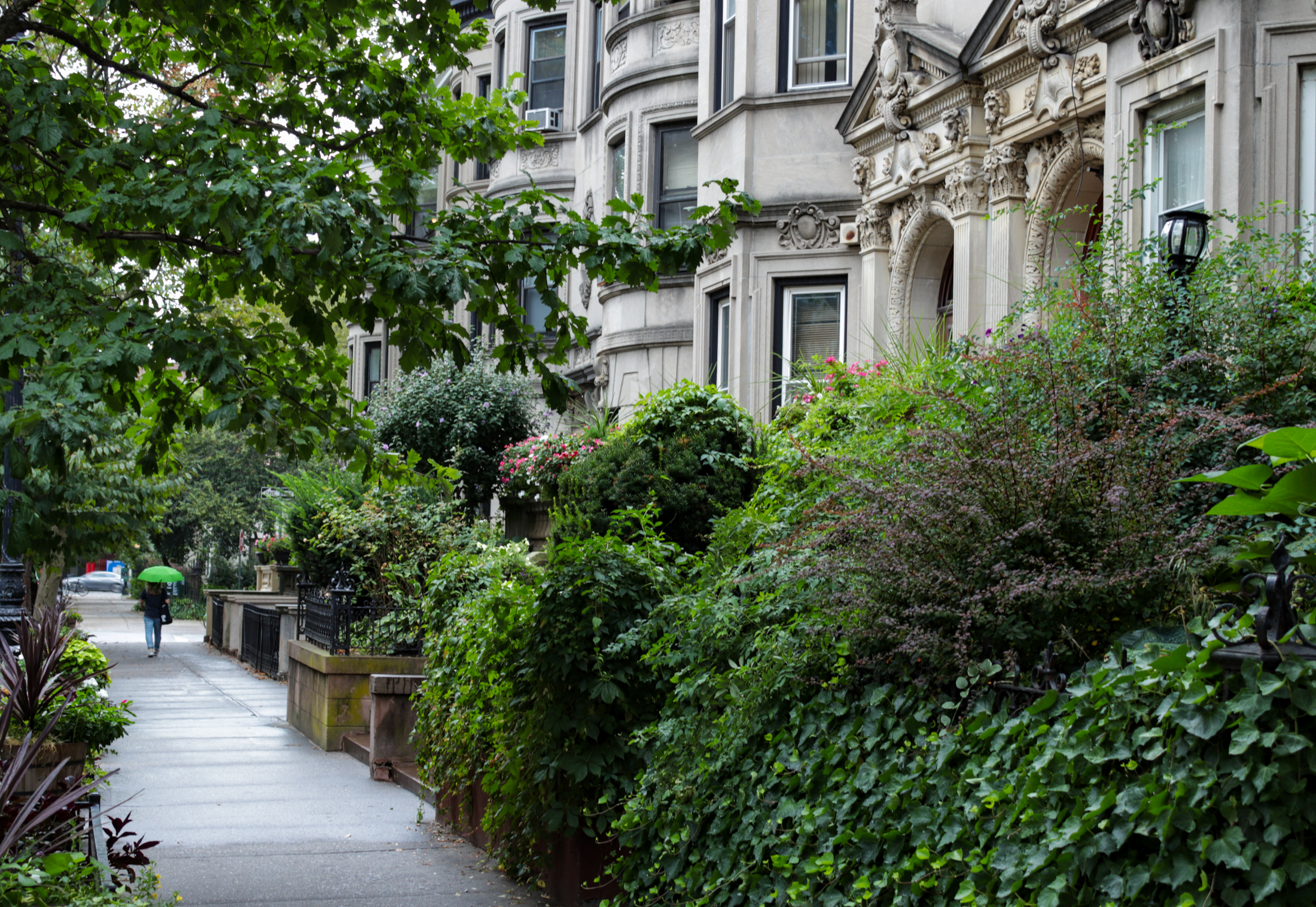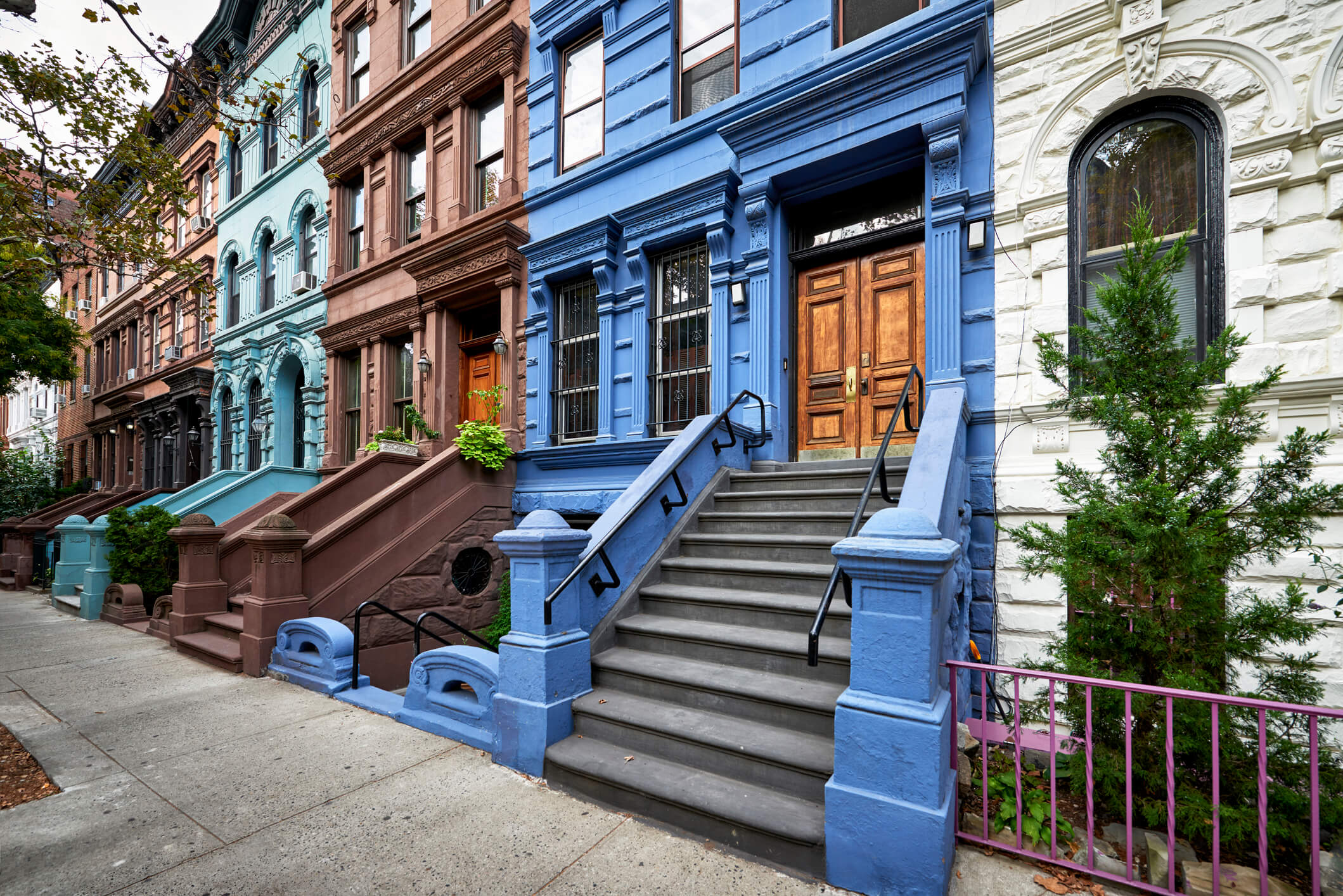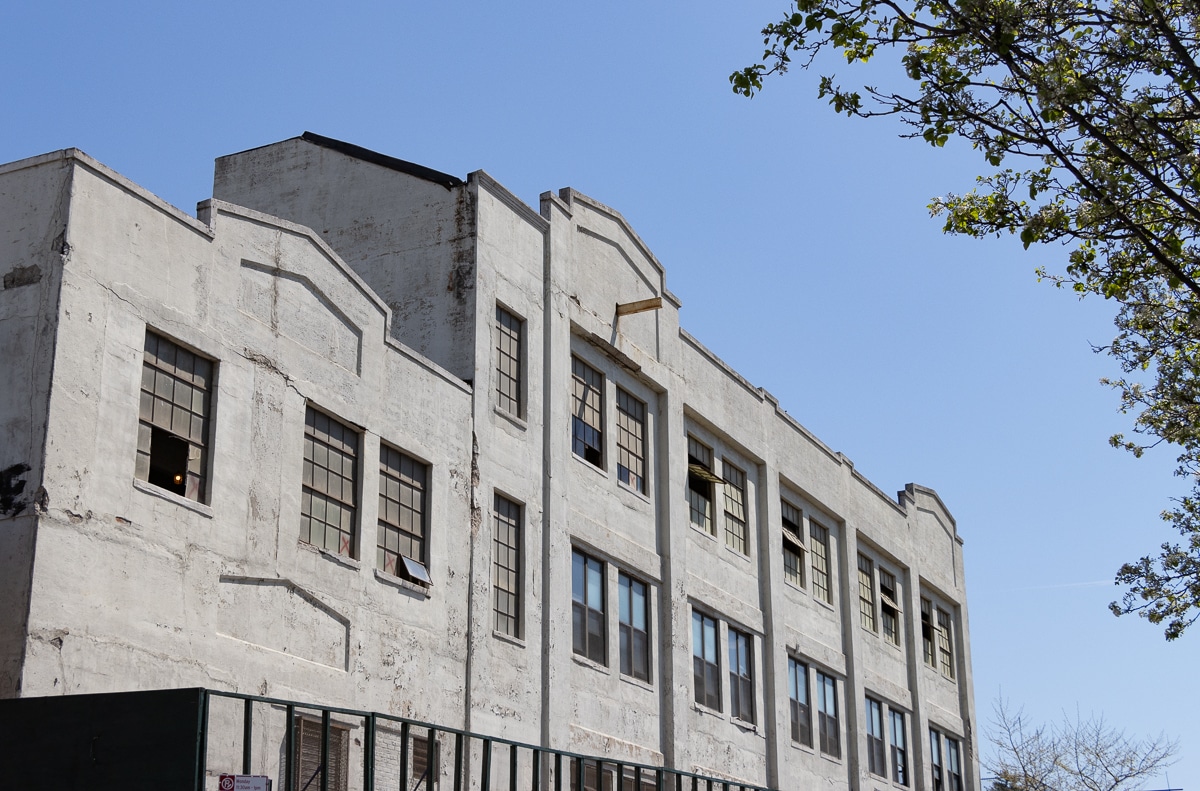Queenswalk: The Bulova Watch Company Headquarters
My friend, preservationist Frampton Tolbert, has a new website, called Queens Modern. If you love mid-20th century Queens architecture, you will be a happy camper. You can wander around dozens of mid-century buildings here, finding all kinds of goodies. Frampton is a meticulous researcher, and the site contains building profiles, architect profiles, maps and a…

My friend, preservationist Frampton Tolbert, has a new website, called Queens Modern. If you love mid-20th century Queens architecture, you will be a happy camper. You can wander around dozens of mid-century buildings here, finding all kinds of goodies. Frampton is a meticulous researcher, and the site contains building profiles, architect profiles, maps and a searchable database. The buildings that he has chosen were highlighted for mention and praise by the Queens Chamber of Commerce. Between 1948 and 1970, the Queens Chamber of Commerce Building Awards were bestowed on almost 400 buildings of all types throughout the borough. The site will eventually have all of them, and more on file, but is launching with almost 150 entries.
The mission of the site is to highlight and document the wealth of modern architecture that was built in Queens in the post-World War II era. American architecture was influenced by many things during this period, including modern “space age” shapes, building technologies and materials. As time has passed, many of these buildings are in danger of being destroyed or altered. The site seeks to showcase the best of them, and document as much as possible, an era that is now officially considered “old.”
Today, many of the architects, designers and their creations are experiencing a comeback in popularity, especially in furniture and the decorative arts. As I look through the site and in my own research for columns for Brownstoner Queens, I am often quite amazed at how truly modern some of the buildings are, even today. Interestingly, they appear at the furthest end of the time spectrum we are dealing with. Many of these buildings have stood the test of time much better than newer examples.
One of the best buildings featured on the site is the Bulova Watch Company Building. It is located at 77th Street and Astoria Boulevard, in a large industrial park nestled into the intersection of the BQE and the Grand Central Parkway. The address is 75-20 Astoria Boulevard. It’s only minutes away from LaGuardia Airport.
The huge suburban style corporate HQ and factory space was designed in 1953 by Alexander D. Crossett and Associates. The two story building has almost 400,000 square feet of manufacturing and office space, and was inspired by the Federal Reserve Bank in Washington D.C. It is constructed of Indiana limestone, with interior floors in imported travertine.
Alexander D. Crossett was not a household name in either Queens of Manhattan architecture. He worked in the office of Elie Jacque Kahn in the late 1920s-1930s, where he is credited along with Kahn for the design of a building on the southeast corner of Lexington Avenue and 57th Street. Crossett also designed the Gansevoort Market Meat Center, at 559-569 West Street in the Meat Packing District on the West Side of Manhattan. That building was completed in 1950.
No one is sure how Mr. Crossett and his firm got this commission. It was certainly a feather in their cap, and is an enormous project. The Bulova Watch Company started in 1875, in Manhattan; a small watch company owned by Joseph Bulova, a Bohemian jeweler and watchmaker. Bohemia is now part of the Czech Republic. He apprenticed at Tiffany & Co. where he learned precision watchmaking combined with an exquisite artistry, a hallmark of that company.
When he decided to go out on his own, Bulova took with him that innovative artistry, specializing in finely manufactured movements and craftsmanship. In 1912, his company established the first manufacturing plant devoted just to the making of watches. The Bulova Company was the first to adopt standards of mass watch production. Before this, all watches were crafted by hand, one at a time. This enabled the company to produce a fine product at an affordable price, and Bulova was soon one of the world’s best known watches.
Their first complete range of men’s watches debuted in 1919, and their first full ladies’ line came out in 1924. They introduced the first clock radio in 1928. In order to insure accuracy in their timepieces, the company established an observatory on the roof of their Manhattan skyscraper headquarters, and measured the precise sidereal time, based on the earth’s rate of rotation relative to the fixed stars.
Bulova was also a leader in advertising. In 1926, radio stations across America heard the first national radio spot advertisement, which told listeners, “At the tone, it’s eight o’clock, Bulova Watch Time,” They also sponsored the world’s first television commercial, a spot right before a televised baseball game between the NY Yankees and the Philadelphia Phillies. The year was 1941, the network was NBC.
Joseph Bulova ran his company for a long time. He died in 1935, leaving the company to his son, Arde, who was the innovative thinker behind the radio and television advertising. Arde was also in charge during World War II, when Bulova watches were manufactured for the American troops. Their “hack watches” were used for accurate timing for missions throughout the war. In 1945, after the war ended, Arde set up the Joseph Bulova School of Watchmaking, which trained disabled veterans.
This headquarters and factory was built in 1953. Crossett and his team designed an impressive building encased in fine Indiana limestone. The design is minimal, but reminiscent of the 1930s Art Deco style recreation centers designed in New York City. That was probably because the consulting architect on the project was Aymar Embry III, Robert Moses’ chief architect, and designer of many of the WPA funded recreation centers and pool complexes built across New York City during the Great Depression. The interior also has 1930s style murals depicting watchmaking and other corporate activities.
Arde Bulova died in 1958 and left the company to his son Henschel. In 1960 Bulova came out with the Accutron watch, the first fully electronic watch ever made. It used a 360 hertz tuning fork instead of a balance wheel as the timekeeping element. The tuning fork was powered by an electric oscillator circuit, instead of mechanical winding. The watch no longer ticked, it hummed. The Accutron was the forerunner of the quartz movement, and was the most accurate watch available to consumers. It was soon a collector’s item, and the most sought after timepiece of its day. This was the company’s highest moment.
Unfortunately, Henschel didn’t inherit the innovative or creative genes of his father or grandfather. He was slow to recognize new time piece technologies, and that cost him the company in the end. The Accutron had been in development before his father’s death, and although Herschel had degrees from Yale and Harvard, he didn’t have the same business smarts as his forebears. He was slow in recognizing the importance of digital timepieces, so it took Bulova five years to develop a digital watch. By that time, they were practically old hat, and the company did not debut with their usual vision or technical wizardry.
He also didn’t jump on quartz technology, which replaced the tuning fork for Accutron technology. By the time the 1970s rolled around, Bulova was losing money for the first time ever. Throughout the next thirty years, the company was sold and traded several times. They always retained the Bulova name, which still had great marketability and name recognition, but the company was no longer its own. In 2008, Citizen Watch, a Japanese company, became the new owner of Bulova. They are now the largest watch company in the world with many recognizable name brands attached to it.
One of the interim companies before Citizen sold this building in the early 1980s. In 1985, the Blumenfeld Development Group renovated and transformed the facility into corporate offices. The interior has an atrium, open spaces, a waterfall and even a health center with a pool, racquetball court, and other fitness amenities, as well as a restaurant, bank, and shopping. It’s a one stop work environment.
The redesign was done preserving as much as possible of the original spaces, including the murals. They also kept the original foyer, which has elements that are reminiscent of the interior of a watch. It’s pretty cool. Today, the building is home to several companies including American Airlines and the Queens Chamber of Commerce. This same group gave the Bulova Center an award for excellence in design in 1953. It’s fitting that they bestow their continuing awards for architectural merit from this building.
(Thanks to Frampton for letting me know he launched. All the best with your endeavor. I’ll be reading and reporting more of the best of these mid-century buildings. The site can be found at www.queensmodern.com.)
(Above photo: Frampton Tolbert for Queens Modern)















What's Your Take? Leave a Comment